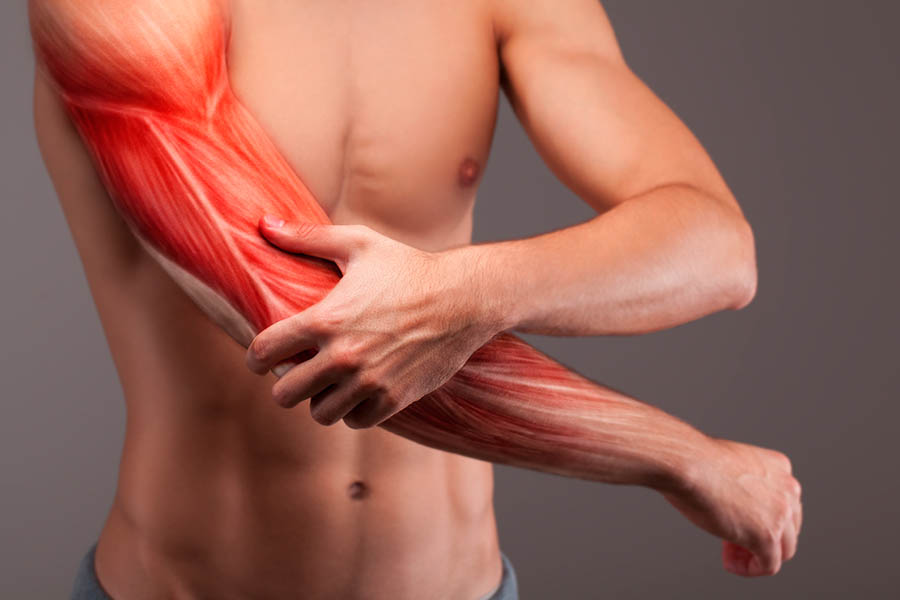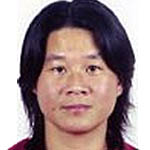Tai-Ying Chou Associate Professor | Department of Athletic Performance
Chou is an associate professor at the Department of Athletic Performance, NTNU. He specialises in football.


(Provided by Associate Professor Tai-Ying Chou and his team from the Department of Athletic Performance)
The performance of unaccustomed eccentric exercise (EC) by the general public can easily cause severe symptoms of delayed-onset muscle soreness (DOMS), which can impair proprioception. This, in turn, can affect an individual's ability to conduct daily activities. Recently, far-infrared ray (FIR) treatment has been described as a noninvasive modality that can be applied to deep tissues of the human body as a means of relieving muscle pain and improving repair of injured tissues, but to date, no previous study has investigated the effects of FIR treatment. This study examined the effects of a 30-min FIR treatment performed daily for 4 days following maximal EC, on the alleviation of DOMS and recovery of proprioception in comparison to a sham treatment in active young women. Active young women were randomly placed into FIR and sham (SH) groups (n = 9/group). Participants performed 12 x 6 maximal isokinetic ECs of the unilateral elbow flexors (EF) using a counterbalanced method, and received a 30-min FIR or sham (SH) treatment on the EF 1, 25, 49 and 73 hours after exercise. Changes in DOMS, position sense (PS) and joint reaction angle to release (JRA) were measured 0, 24, 48, 72, 96 and 120 hours before and postexercise, and were compared between conditions with a two-way ANOVA. The results showed that increases in DOMS after EC for the FIR group were significantly smaller than those for the SH group, and the recovery of PS and JAR was significantly faster for the FIR group than for the SH group. These results suggest that FIR treatment was effective in alleviating DOMS and enhancing the recovery of proprioception after EC. Thus, FIR treatment may be an effective modality to eliminate DOMS and enhance the recovery of proprioception after EC in the general population.
For those who do not exercise regularly, engaging in intense physical activities (e.g., moving house, down-hill hiking, running, resistance exercise), especially unfamiliar eccentric exercises, are often a shortcut to DOMS, or what we call sore legs, which reduces muscle performance and induces proprioception disorder, which in turn affects our daily activities. Even athletes suffer from DOMS and reduced muscle performance after sudden increases in the quality and quantity of their training. It is also not uncommon to hear stories about overtraining or over-disciplining in schools (e.g., frog jumps, running stairs) and the military (e.g., unreasonably difficult drills without water) where pupils or recruits are left with potentially health-damaging problems including DOMS, myositis and rhabdomyolysis. Although the negative effects of eccentric exercises can last for 5-14 days, it has been shown that with proper management (e.g., 1.5 litres of water per day, temperature reduction), they are not necessarily life-threatening. But how to alleviate soreness, improve physical performance, and recover our muscles and proprioception as soon as possible is also a pragmatic problem and in the interest of both the general public and athletes. This is why sports scientists have long sought to develop effective and accessible methods to alleviate fatigue, improve physical performance and recover proprioception.
Far-infrared rays (FIR) are a non-invasive phototherapy that is capable of entering deep tissues of the human body and has recently been proven in animal tests to alleviate chronic muscle pain, improve circulation, promote healing, lower blood pressure, and induce hyperplasia in the nervous system. However, no previous study has investigated the effects of FIR treatment as a means of relieving muscle pain, improving repair of injured tissues, and enhancing the recovery of proprioception after eccentric exercise. This research therefore set out to understand the aforementioned questions and found that with muscle pain and proprioception disorder, 30 minutes of FIR treatment performed daily for 4 days following eccentric exercise was shown to induce significantly faster muscle pain alleviation as well as enhance the recovery of proprioception in the FIR group compared to a sham treatment group.
These results suggest that FIR treatment was effective in alleviating DOMS and enhancing the recovery of proprioception after eccentric exercise. Thus, FIR treatment may be an effective modality to eliminate DOMS and enhance the recovery of proprioception after EC in the general population.
Source:
Tai-Ying Chou et al. (2020) Effects of far-infrared rays on the alleviation of muscle soreness and recovery of proprioception https://doi.org/10.6222/pej.202006_53(2).0007

Chou is an associate professor at the Department of Athletic Performance, NTNU. He specialises in football.

Where does coaching training knowledge come from?

Department of Physical Education and Sport Sciences

Coffee Helps Relieve Muscle Soreness Caused by Exercise, Making you Stronger

Department of Physical Education

Feeling anxious and down? Try Mindfulness and Relaxation Practices!

Department of Physical Education and Sport Sciences

Neuroscience Shows How Exercise Can Help Children With ADHD

Department of Physical Education and Sport Sciences